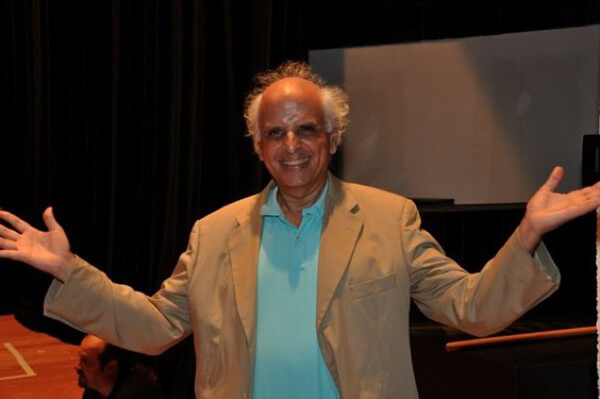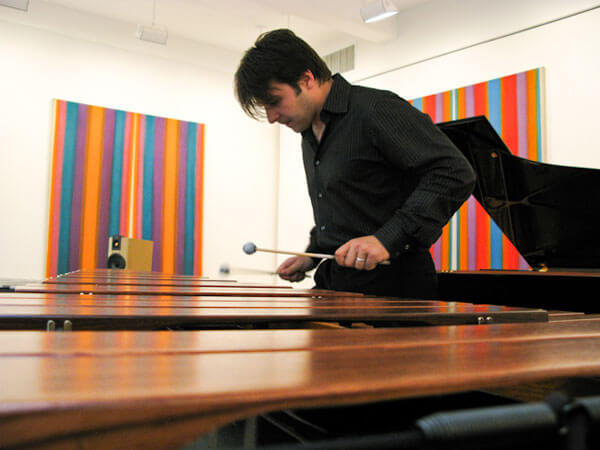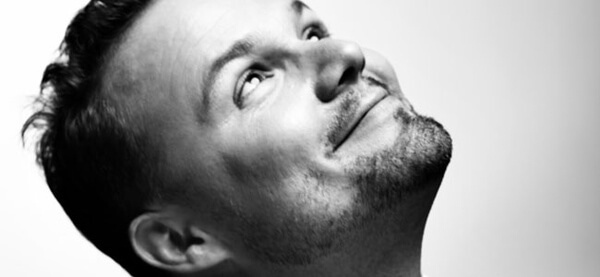 Around 2004, composer Paul Lansky famously made an about-face. After over 40 years of pioneering work in computer and electronic music, he began to mostly compose scores for live human musicians to play. In a recent interview (with himself!), he stated “I used to say that the difference between electronically sculpting sound and preparing scores was like the difference between being a filmmaker and being a playwright. I was right.” Textures, his latest work in playwright mode, was premiered on October 5, 2013, at Oberlin Conservatory’s Warner Concert Hall by the recently formed Hammer/Klavier ensemble, who commissioned it.
Around 2004, composer Paul Lansky famously made an about-face. After over 40 years of pioneering work in computer and electronic music, he began to mostly compose scores for live human musicians to play. In a recent interview (with himself!), he stated “I used to say that the difference between electronically sculpting sound and preparing scores was like the difference between being a filmmaker and being a playwright. I was right.” Textures, his latest work in playwright mode, was premiered on October 5, 2013, at Oberlin Conservatory’s Warner Concert Hall by the recently formed Hammer/Klavier ensemble, who commissioned it.

Composer Paul Lansky (photo credit: music.mcgill.ca)
Hammer/Klavier is pianists Michael Sheppard and Thomas Rosenkranz and percussionists Svet Stoyanov and Gwen Burgett. Lansky wrote Textures to exploit the ensemble’s unusual instrumentation. As he told the audience in brief introductory remarks, “Piano performance practice has been around for more than 250 years and percussion…well, forever in some sense, but in formal practice for only the last 75 years or so. And both are, in reality, very percussive, so that’s a lot of material to reckon with.”
So, as Lansky said, he “started to splash notes onto paper, trying to fuse these two traditions together.” The resultingTextures is a broad and fascinating exploration of the similarities and differences in the sonic possibilities of pianos and a vast array of percussion devices, including marimbas, glockenspiels, vibraphones, wood blocks, bells, crotales, drums, cymbals, and more. Each of the eight movements — I. Striations; II. Loose Ends; III. Soft Substances; IV. Slither; V. Granite; VI. Points of Light; VII. A flutter, On Edge; and VIII. Round-Wound — examines a different percussive sound realm.

Hammer/Klavier percussionist Svet Stoyanov (photo credit: pearldrums.com)
Striations began with a repeated four-note figure tossed from player to player with increasing speed. Stoyanov and Burgett steadily expanded the textural complexity, adding notes of wood blocks, crotales, cymbals, and glockenspiel. Loose Ends has a bluesy jazz feel, with heavy rhythmic drums leading to a wild section on marimba and xylophone echoed in the pianos. Soft Substances had a lilting melody at its core. Bowed vibraphone and soft mallet cymbal strikes issued broad mellow sweeps of sound around soft arpeggiated trills on the pianos. Granite was all hard strikes in close formation, like toy soldiers marching, but not necessarily in the same parade. Rhythm dominated, with little tonal content, even from the pianos. Faint, delicate strikes on glockenspiel and long, slow pulls of the bow on vibraphone bars in Round Wound set the tone for a lush melody on the pianos, punctuated by soft strikes on wood and metal. An intricate winding fugue on marimba and vibraphone over steadily repeated bass on the pianos brought Lansky’s new “play” to a satisfying conclusion.
The program began with studies of the characteristics of pianos and percussion instruments separated from each other, setting the stage for Lansky’s work combining them. Toccata for two percussionists, by Anders Koppel, pitted wood against metal with Stoyanov on marimba and Burgett on vibraphone. The players set off on a high-speed chase in call-response form, with accelerating pace, then an abrupt stop. A second section contrasted the rich warmth of the marimba with the chilly dazzle of the vibraphone, featuring sweeping gestures pitting moonlight against starlight. The finale featured slashing gestures in fugal speed-runs up the counterposed ladders.

Hammer/Klavier pianist Thomas Rosenkranz (photo credit: hellhotfestival.org)
David Lang’s Opheus over and under, for two pianos, aptly illustrated the percussive nature of the piano. Rosenkranz and Sheppard relentlessly pounded the keys, moving ever so slightly up the keyboard only to return to the middle and repeat the progression again. Some might think that once or twice around this block was enough, but there was great fascination in the numerous cycles with barely perceptible changes each time.























